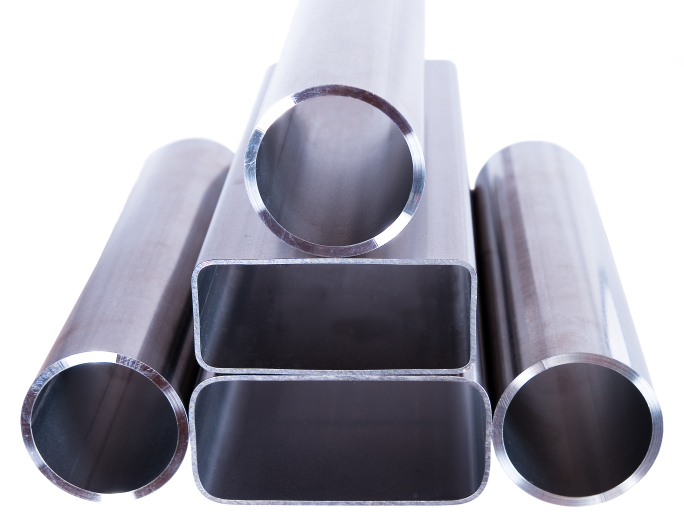Using tubular hydroforming to create parts from aluminum extrusions is becoming increasingly popular as efforts to reduce structural weights have been gaining traction. Furthermore, hydroforming aluminum allows for some unique part design features.
Manufacturers in the automotive industry, including OEMs such as Ford and Tesla, are taking advantage of these benefits in order to create lighter, stronger cars and expand the frontiers of automotive design.
While automotive manufacturers continue to innovate by hydroforming aluminum, there are five things that they — and all industries that could benefit from tubular hydroforming — need to keep in mind while working with hydroformed aluminum tubular parts. They are:
- Elongation Restrictions
- Alloy Tempers
- Restriction on Corners
- Timing for Punching
- Materials Costs
In other words, there are some advantages to making tubular parts by hydroforming aluminum, but there are also design considerations that need to be taken into account when subjecting the material to this metalforming process.
Elongation Restrictions
Aluminum is generally regarded as more malleable that steel. While this is true, it is also less resilient. You can bend and stretch aluminum relatively easily, but too much distortion will weaken the material to the point that it may not meet production requirements.
Aluminum does not have the elongation properties of steel alloys, making its degree of expansion much more limited. A good rule of thumb is that steel can tolerate 50 percent elongation, while aluminum can only endure 20 percent before structural integrity is seriously compromised.
This will vary, of course, depending on the grades of steel and aluminum compared. Also, the physical capabilities of an alloy can be superseded through a combination of annealing the metal and breaking the hydroforming process down into several smaller steps.
Alloy Tempers
There are a number of different tempers of aluminum available for tubular hydroforming applications: O, T, and W.
T-grade aluminum is heat-treated, aged aluminum. T6, which is heat-treated and artificially aged, is best used for structural applications requiring strength and rigidity such as automotive pillars and roll bars. Final heat treatment after hydroforming is required to achieve a T6 temper.
T4, also heat-treated but naturally aged, is not quite as stiff and can accommodate greater forming. It tends, however, to spring back after forming — a quality that must be monitored carefully.
W-grade aluminum, while also heat-treated like T-grade aluminum, is not aged artificially or naturally. This makes it much softer. Along with O-grade aluminum, which is annealed and very soft, W-grade aluminum is generally used for decorative tube hydroforming applications where structural integrity is not the overriding concern, such as handles.
Restrictions on Corners
Tubular hydroforming works by applying equal pressure across a tubular work piece set in a closed die and then applies pressure in order to form the tube into the desired shape. Expanding a work piece into a mold with small, concave corners in this manner would require an immense amount of pressure.
While these restrictions can be somewhat mitigated by using larger dies and incremental hydroforming sequences, true corners are nearly impossible to achieve even with steel. Given aluminum’s comparative elongation restrictions, parts with sharp corners are all but impossible.
Timing for Punching
Many automotive parts need holes punched in them so that they can be fastened to other parts or so that fixtures can be installed.
As is the case with steel tubular hydroforming, it’s best to punch aluminum work parts while they are in the hydroforming die. This is the easiest way to control the placement of the holes and is generally less expensive. If need be, though, tube hydroformed parts can be punched after the hydroforming process is completed.
Materials Costs
Aluminum is typically four to five times as expensive as steel while being about a third as light.
It’s important to note, though, that using aluminum in lieu of steel will never be an apples-to-apples substitution. Often, you will need to use more aluminum in order to thicken walls so that an aluminum part will achieve the same degree of structural integrity as a corresponding steel part.
In most cases, this means that a part made via hydroforming aluminum will be more in the neighborhood of 8–10 times as expensive as a comparable steel part when assessing raw materials alone.
Final Thoughts on Hydroforming Aluminum
Hydroforming isn’t a new technology any more, but it is one that is still being explored and evaluated.
Furthermore, each material that can be used in tubular hydroforming — mainly aluminum and steel alloys — has its own characteristics that must be taken into account.
If you’re considering hydroforming for prototyping or production, we recommend you work with a company familiar with the pitfalls and potentials of the process and one that has experience applying it to different alloys and applications.
At Mills Products, we pioneered the use of tube hydroforming for appliance manufacturing and have been doing it for decades for an array of industries. Whatever your industry, please contact us if you’d like to discuss your project and get our honest opinion.


